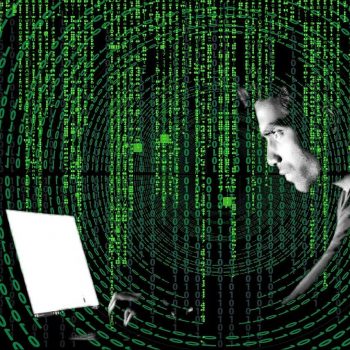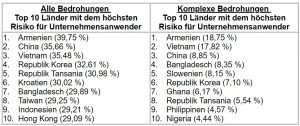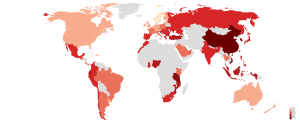
The risk of cyber attacks on companies has risen by 24 percent since the start of the corona pandemic. According to Avast's Global PC Risk Report, since the pandemic, businesses have become a quarter more likely to be attacked by PC malware. In a global comparison, German companies are less affected.
Avast, a leading global provider of IT security and data protection solutions, has released the results of its latest Global PC Risk Report. According to this, the probability that business users will be confronted with a PC malware has increased by 24 percent compared to the previous year - from 11,25 to 13,9 percent.
Corona pandemic has increased the risk
“During the corona pandemic, the ability to work from home posed major challenges for corporate security. Not every company had implemented secure business VPNs and remote access solutions. Cyber criminals have taken advantage of this. We have seen increased abuse of the remote desktop protocol and, in particular, an increase in ransomware attacks, ”said Michal Salat, Director of Threat Intelligence at Avast. Overall, the risk for companies to be confronted with malware attacks has increased worldwide.
For the annual report, Avast examined cyberattacks that the company blocked in March and April 2021 and in the same period in 2020. The report shows that companies in Germany were confronted with some type of PC malware with a probability of 2021 percent during this period in 10,03. On a global average, PC users in German companies have a slightly lower risk of attack than other countries.
Assessed risk to business
The report also looks at the risk of the “advanced threats” facing businesses. Avast defines these complex cyberattacks as sophisticated or not yet occurred threats. They are designed to bypass common protection technologies in security software, such as signatures, heuristics, emulators, URL filters and email scans. For this type of threat, the risk for German business users in the specified period was just under 1,91 percent, which is slightly below the global value of 2,29 percent.
Cyber threat situation in global comparison
Areas with more conflictual socio-political situations also seem to be more at risk in the online world. Companies in Asian countries are most at risk, followed by Africa and Eastern Europe. The ten countries where business customers are most vulnerable to threats:

For all types of threats, the regions with the lowest risk were the Nordic, Western and Central European countries, as well as the United States, Latvia and the Dominican Republic. Of the complex threats, countries with fewer than eleven million inhabitants were hit hardest. The size of the countries seems to be the common denominator here.
Full report available online
Avast's Global PC Risk Report provides a snapshot of cyber attacks in the first half of 2021 with data from March 16, 2021 to April 14, 2021 and is available for download here. The report provides an overview of cyberattacks that have taken place within thirty days and provides insights into the general risk that users in companies around the world and in different countries are exposed to.
Methodology of the report

Overview of the countries with the highest risk for corporate users - complex threats (Image: Avast).
The data contained in this report comes from Avast's threat detection network and represents the threats Avast protected its PC users from between March 16, 2021 and April 14, 2021. For the purpose of providing statistically relevant data, this report includes data from countries, territories, and regions with a sample size of 10.000 or more home computers and 1.000 business computers that have encountered threats during that time. The data refer to the entirety of threats as well as complex threats and assess the risk ratio for private and business users around the world.
To calculate the risk profiles for this report, the number of computers on which Avast protection technology stopped at least one threat was divided by the total number of computers actively protected by Avast during the study period.
If comparisons are made with the previous year, they refer to data from the exact same period, March 16, 2020 to April 14, 2020.
More at Avast.com
About Avast Avast (LSE: AVST), a FTSE 100 company, is a leading global provider of digital security and privacy products. Avast has over 400 million online users and offers products under the Avast and AVG brands that protect people from threats from the Internet and the evolving IoT threat landscape. The company's threat detection network is one of the most advanced in the world, using technologies like machine learning and artificial intelligence to detect and stop threats in real time. Avast's digital security products for mobile, PC or Mac have been top-rated and certified by VB100, AV-Comparatives, AV-Test, SE Labs and other test institutes.
